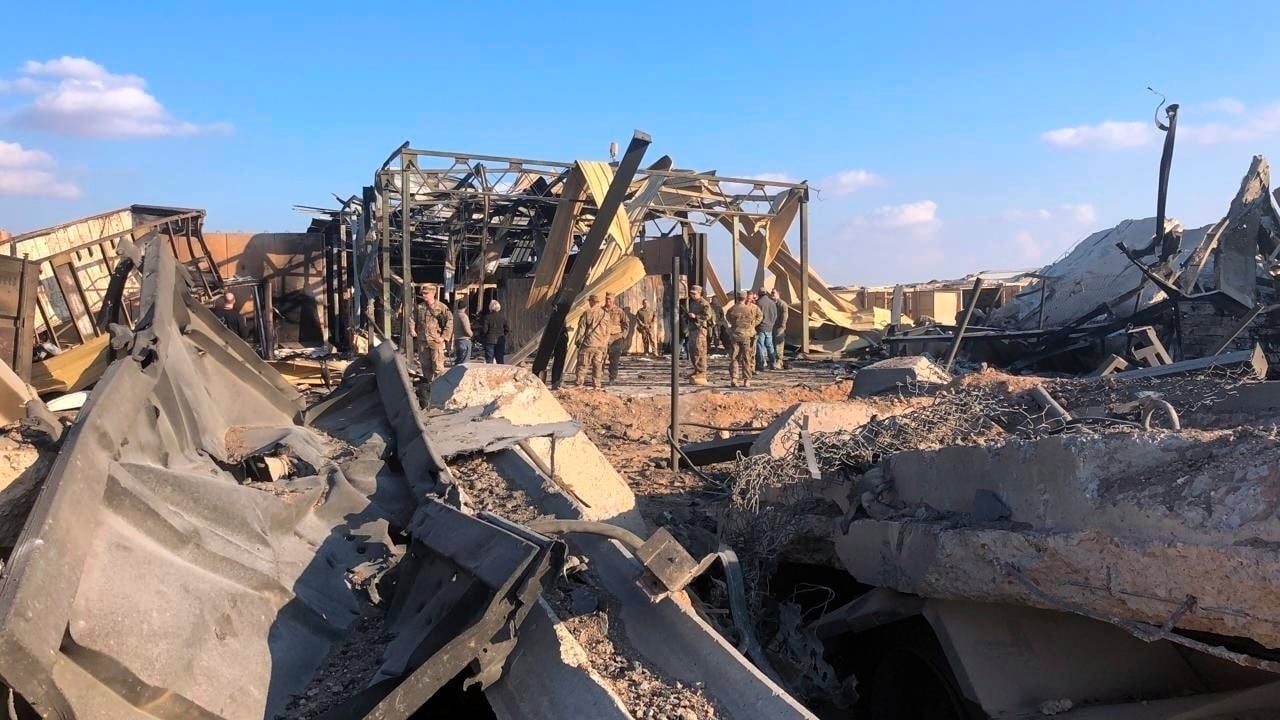FORT BLISS, Texas – The new commander of Fort Bliss says the world is a complicated place with multiple threats to the nation’s security, so the Army must be prepared for any mission it’s called on to pursue.
Maj. Gen. Stephen M. Twitty, who took command of Fort Bliss and the 1st Armored Division in August, says his No. 1 focus is to make sure the division receives "tough and realistic" training and is prepared to deploy at a moment's notice.
Since he took command, Fort Bliss was notified that more than 300 soldiers would be going to West Africa to help contain the spread of the deadly Ebola virus.
About 70 soldiers left a week ago in the advance party and another 250 are scheduled to leave in mid-November.
The mission is an example of why soldiers at Fort Bliss need to be ready to deploy on short notice, said Twitty, who's in his third tour at the installation.
During the past decade of war in Iraq and Afghanistan, Army units would typically be notified a year in advance that they would be deploying and then they would do a train-up leading to that overseas assignment, Twitty said.
"We have gotten rid of that mindset; we are going expeditionary," he told the El Paso Times (http://bit.ly/1ujClvD ).
The Fort Bliss contingent that's going to Africa — mostly from the 2nd Battalion, 501st Aviation Regiment — provides a classic illustration of why all units need to be ready to deploy in a matter of weeks, not months, Twitty said.
"Did we know about (this mission) ahead of time? No," Twitty said. "Did we train up for it (over months)? No. I use this as an example to all our troops out here. When I say, 'Be ready,' that's what I mean."
In addition to the Ebola virus, Twitty cited instability in the Middle East and in eastern Europe, the recent terrorist attacks in Canada and the continuing U.S. presence in Afghanistan as examples of the type of situations that the Army must be prepared to respond to, if called.
"We are living in a complex world with all kinds of instability," he said. "So we must be ready."
Retired Brig. Gen. Richard Behrenhausen, who lives in El Paso, said Twitty is "right on target" in emphasizing training and readiness.
"At this point in time with the shrinking size of the military, every unit needs to be trained and ready to deploy on a moment's notice," Behrenhausen said. "Fort Bliss has a fabulous training area, and there is no reason not to use it to its maximum advantage."
With 1.2 million acres of training area, Fort Bliss dwarves places like the National Training Center at Fort Irwin, Calif. Fort Bliss provides unique opportunities right here, Twitty said.
Twitty, a 51-year-old native of Chesnee, S.C., has revamped Fort Bliss' signature training event known as Iron Focus. It will keep its name but will now have a wider impact across the 1st Armored Division, he said.
In the past, Iron Focus was held during the summer and it was used to prepare one brigade for a rotation at the National Training Center.
The next Iron Focus will be held during two weeks in late March and into early April 2015. It will still prepare a single brigade — in this case, the 1st Armored Division's 1st Stryker Brigade Combat Team for a rotation at NTC later in 2015.
But the exercise will have some new wrinkles by getting all brigades across the division involved. The idea is to bring "NTC to Fort Bliss" by creating a more complex and realistic training exercise, Twitty said.
The 2nd Brigade's 1st Battalion, 35th Armored Regiment, for instance, will serve as the opposition force during the exercise.
The Iron Knights have served as the opposition force during the Network Integration Evaluation, an Army modernization exercise held at Fort Bliss twice a year.
"They do it very well," Twitty said. "I got a trained opposition force. Why reinvent the wheel?"
The exercise will also include part of the 4th Armored Brigade Combat Team, which did a rotation at NTC at Fort Irwin in September, the 1st Armored Division Combat Aviation Brigade and the new Division Artillery, formerly the 212th Fires Brigade.
The division headquarters will serve as the higher headquarters during the exercise.
Fort Bliss' 15th Sustainment Brigade will also participate and will practice what is called "refuel on the move." This is like an Army version of a NASCAR pit stop and has been practiced rarely, if at all, since the initial invasion of Iraq in 2003, Twitty said.
The new version of Iron Focus will also include an Air Force contingent from Moody Air Force Base in Georgia, Twitty said.
By including all these different elements, it will make it so 1st Brigade is better prepared for when they go to Fort Irwin, but more importantly make them better prepared to go to war if needed, Twitty said.
This new format will also make sure that all levels of the division from individual soldiers up to the division headquarters are ready and prepared, Twitty said.
"My philosophy is I never want a single unit out there training at Iron Focus," he said. "The way to really get at training is to be multi-echelon and you have to give them everything they will experience in combat. I will throw the kitchen sink at them."
The 1st Brigade, as the primary unit in the exercise, will face a hybrid threat during Iron Focus. This means they will practice army-on-army fighting, a skill which has atrophied during the past decade of war in Iraq and Afghanistan, and counter-insurgency, Twitty said.
The new version of Iron Focus will culminate with a large-scale daytime and nighttime live fire exercise, Twitty said.
By revamping Iron Focus, Twitty said he has changed the way the entire division will train.
In the train-up leading to Iron Focus, Twitty said he will also place a greater emphasis on live fire training from the individual soldier up to the battalion level, he said.
"Every year, I get allocated ammunition," Twitty said. "I told every single one of my commanders that if I have to turn in one bullet to the Army, we are wrong. If they ask me for more ammunition because we ran out, I will get it for them but we aren't turning back ammunition in this division."
Twitty has served twice previously at Fort Bliss. He was a brigade commander here from 2005 to 2008 and served as deputy commanding general for operations for the 1st Armored Division and Fort Bliss from September 2010 to March 2012.
Most recently, he served as deputy chief of staff for operations, plans and training for U.S. Army Forces Command at Fort Bragg, N.C.
For Twitty, his wife Karen, and youngest daughter Brooke, coming back to Fort Bliss was a welcome return.
"We are glad to be back here," Twitty said. "I have a lot of friends here. I have to tell you, it feels like home."





